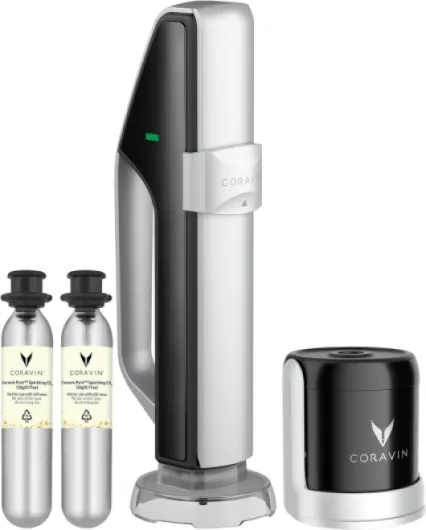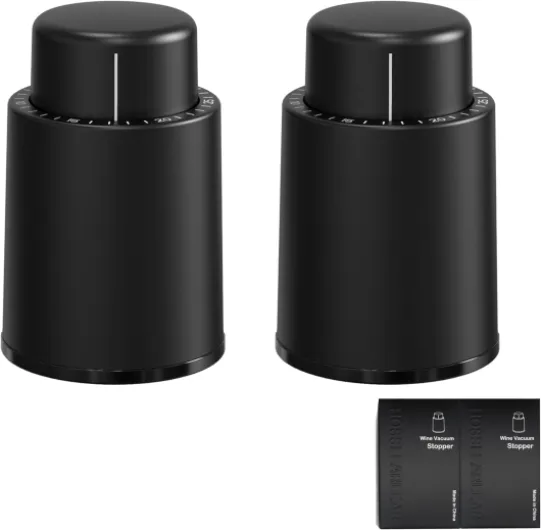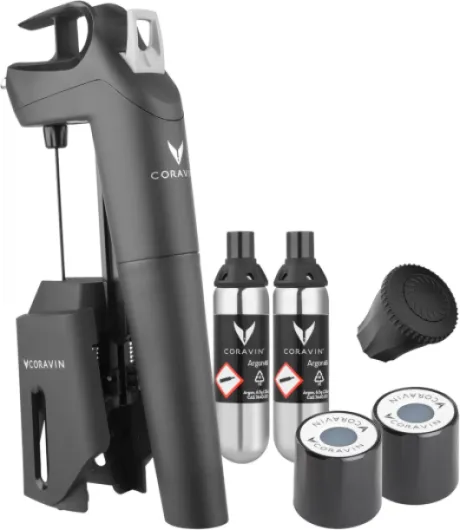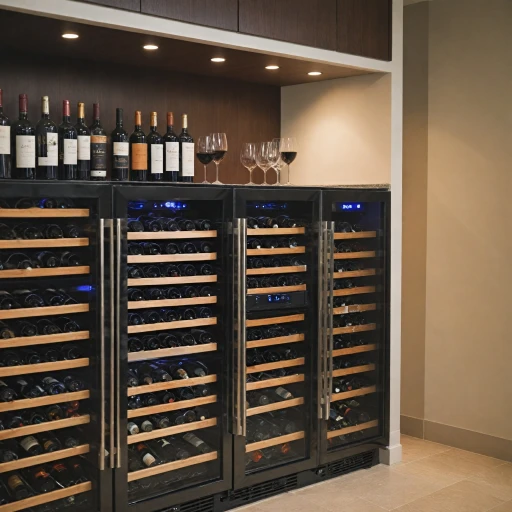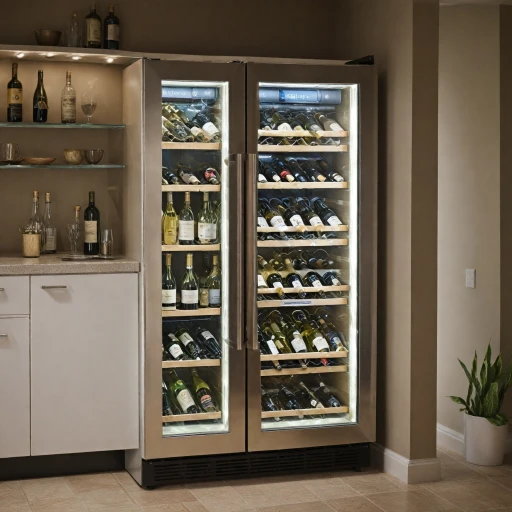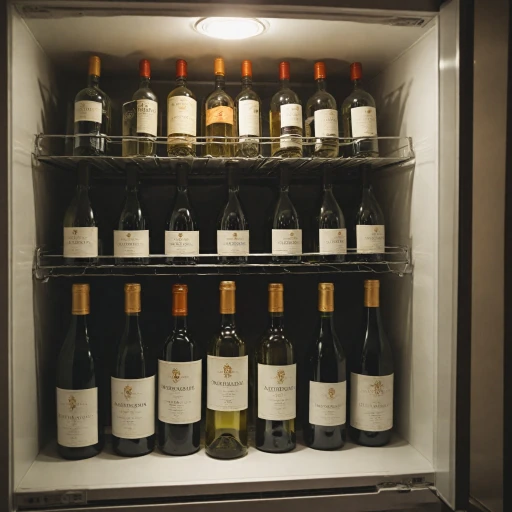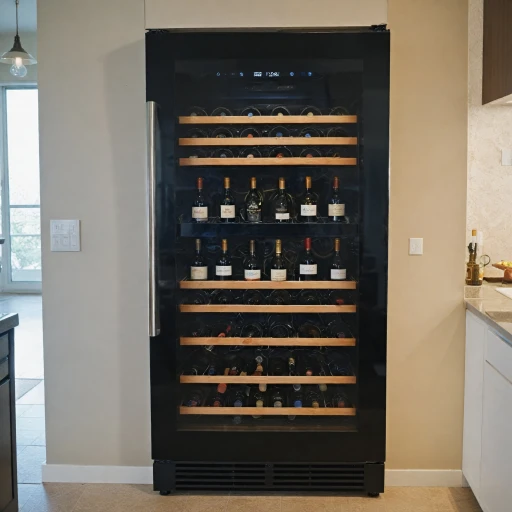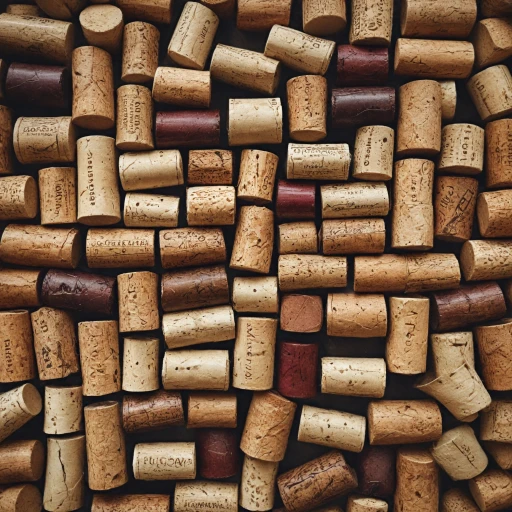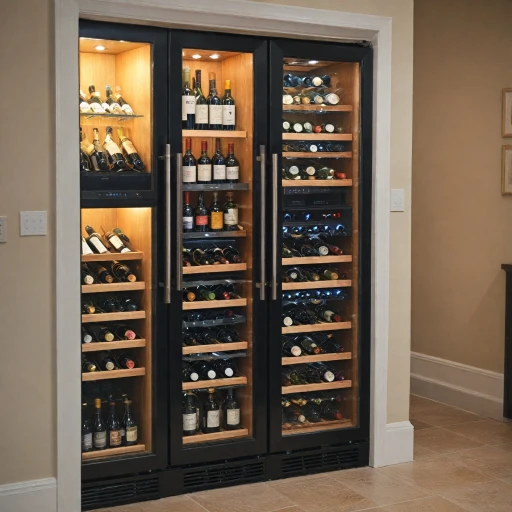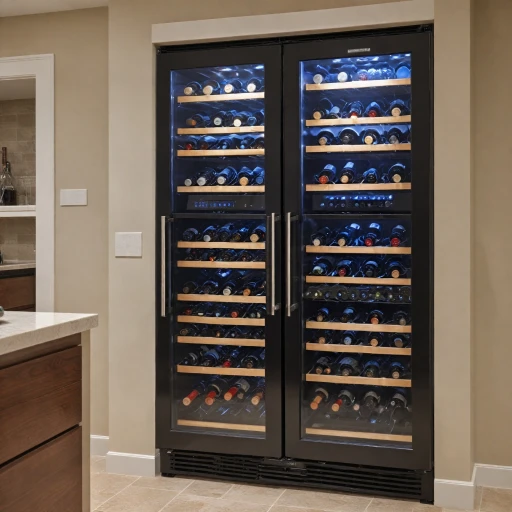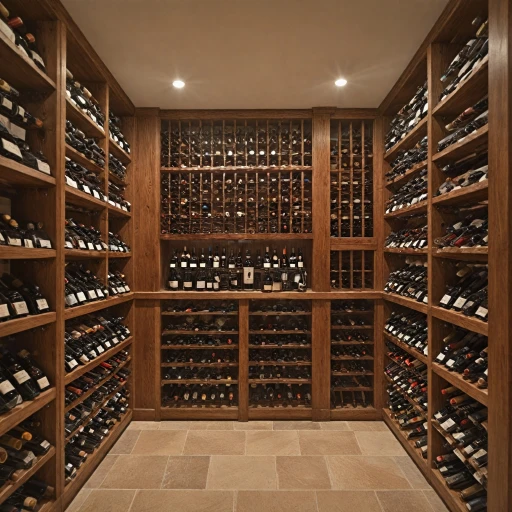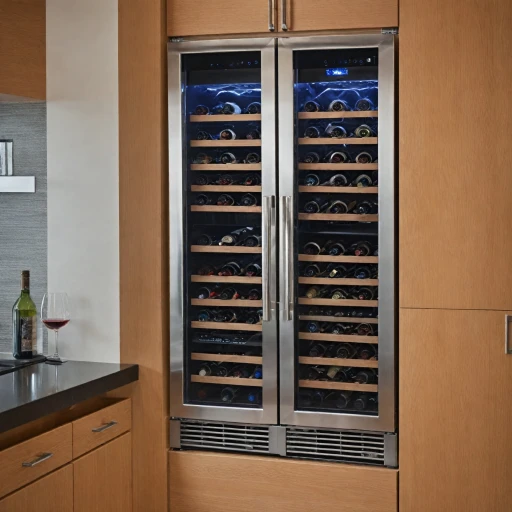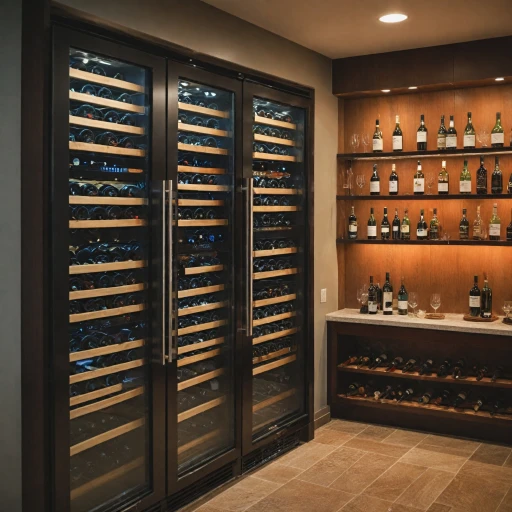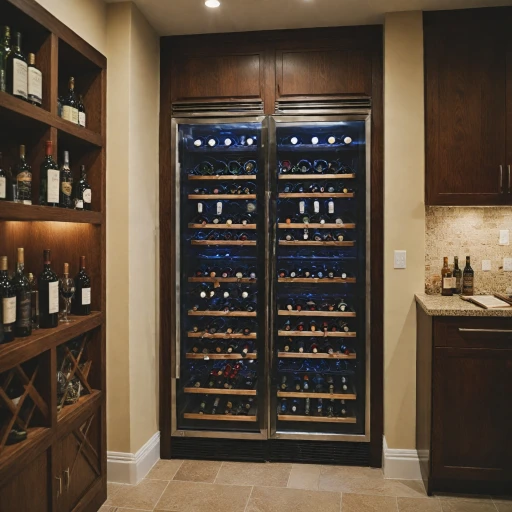
Understanding Argon Wine Preservation
Discovering Argon’s Role in Wine Preservation
Argon is an inert gas that plays a crucial role in wine preservation. Originating from the earth’s atmosphere, this gas is colorless, odorless, and tasteless, which makes it ideal for preserving the delicate flavors and aromas of wine. When you open a bottle wine, exposure to oxygen can lead to spoilage, diminishing the wine's quality over time. However, with the use of argon gas, you can mitigate this process and enjoy better quality wine longer. The application of argon in wine preservation has become increasingly popular due to its effectiveness in maintaining wine freshness. Devices such as the Coravin and Silvadore wine preservers utilize argon gas to create a barrier between the wine and the air inside the bottle. This method is especially beneficial for those who savor a single glass without the need to finish the entire bottle wine, thus aligning with the modern lifestyle where enjoyment and quality are paramount. Unlike other gases, argon is heavier than air, allowing it to settle over the wine surface and prevent oxidation more effectively. This quality makes argon a preferred choice in many wine preservation systems. Units like the Winekeeper or VineyardFresh wine preserver argon spray provide convenient ways to preserve wine’s pristine condition, often at a regular price that enhances the value of your wine collection. Argon wine preservation is not just about maintaining taste but also about preserving the investment in your wine bottles, increasing wine revenue, and maximizing enjoyment. As you explore the different preservation methods and their advantages, remember that understanding the art and science of wine corks can also provide complementary benefits to your wine experience.
- + Preserves wine by the glass
- + Includes argon gas capsules for optimal preservation
- + Comes with screw caps for easy sealing
- + Features a wine aerator for enhanced flavor
- + Limited edition Hermitage Red
Benefits of Using Argon in Wine Preservation
The Value of Argon in Wine Preservation
Preserving the freshness of an open bottle of wine is an essential concern for enthusiasts and connoisseurs alike. Argon gas offers a unique advantage over other methods by effectively displacing oxygen, which can spoil your wine if left unchecked. The inert nature of argon ensures that the wine remains untouched by oxygen, preserving its quality for extended periods.
Wine preservation units, like the Silvadore wine preserver and Coravin, leverage the power of argon to maintain the pristine condition of your wine. This gas not only helps to maintain a wine's bouquet but also preserves its flavor profile, allowing you to enjoy better quality wine long after the bottle has been opened.
Another compelling reason to opt for argon is its ability to preserve from the very first glass to the last. This is particularly beneficial if you only enjoy a glass or two at a time. Preserver argon methods, including Silvadore and Vineyardfresh, ensure that your wine stays fresh, yielding a longer shelf life and enhancing your wine revenue potential.
The factors of price and effectiveness often come into play, and while an argon-based preserver might come with a higher initial investment compared to other methods, the results in terms of wine quality and preservation time often justify the regular price. Ultimately, it allows enthusiasts to enjoy better wines over time, preserving every bottle wine with confidence.
Find out more about how to enhance your wine storage methodically by exploring how a humidity-controlled refrigerator can elevate your wine storage.
How to Use an Argon Wine Preserver Effectively
Practical Steps to Keep Your Wine Fresh with Argon
Using an argon wine preserver effectively ensures that your wine remains fresh and enjoyable for longer periods. Whether you're a wine enthusiast or someone who only occasionally indulges, understanding the best practices can make all the difference.
The overall process of using argon involves replacing the oxygen in your open bottle with argon gas. This creates a protective layer above the wine, minimizing oxidation. Here’s how you can proceed with this preservation step by step:
- Initial Setup: Begin with ensuring that the wine preserver you choose, such as the popular Silvadore wine preserver, is ready for use. Check the unit's functionality and familiarize yourself with how the preserver spray mechanism works.
- Open Bottle Preparation: Once you've opened a bottle, pour a glass of wine and immediately prepare to use the preserver. The quicker you use argon after opening, the better your preservation results.
- Argon Application: Insert the nozzle of the preserver or spray into the bottle neck and dispense the recommended amount of argon gas. Brands like Coravin and VineyardFresh wine offer precise instructions on the amount needed based on bottle size and usage patterns.
- Storage Considerations: After using the argon preserver, cork or cap the bottle securely. For optimal results, store the open bottle in a climate-controlled environment. If you are interested in further enhancing storage conditions, explore the concept of the optimal temperature for storing wine in a fridge.
Employing these steps will ensure that you preserve wine to enjoy better quality beverages over time. Using argon provides an efficient preservation method that rivals and often surpasses other techniques, helping you maintain a fresh wine collection and ultimately increasing wine revenue from better quality servings.
Comparing Argon Preservers with Other Wine Preservation Methods
Argon Wine Preservers Versus Other Methods
Argon wine preservers, such as the coravin and silvadore, are popular choices in the realm of wine preservation, but how do they stack up against other methods? When it comes to keeping a wine bottle fresh, the use of argon gas has gained significant attention due to its efficiency in maintaining quality wine. Understanding the core function of these preservers is essential. When a wine bottle is open, oxygen interacts with the wine, leading to oxidation. Argon gas, being heavier than air, creates a protective barrier over the wine, reducing exposure and slowing the process. This approach is favored for its simplicity and effectiveness, preserving wine’s taste and aroma. Though argon preserves wine well, there are other popular preservation methods. Devices like the winekeeper utilize inert gas to prevent oxidation. However, compared to argon, these methods often lack the precision and ease of use that argon offers. Vacuum pumps, another preservation approach, remove air from bottles but may inadvertently strip out some of the wine's aromas and flavors, thus affecting the overall experience. Price is another consideration. The unit price of some argon-based systems can be higher than alternatives, but they often provide better quality preservation, especially for high-end wines. Regular price conscious buyers might opt for more budget-friendly options, although at the expense of prolonged freshness. In summary, while there are various wine preservation techniques available, argon wine preservers like vineyardfresh and silvadore wine products stand out for their effectiveness in preserving open bottles, maintaining quality, and allowing users to enjoy better and fresher wine for longer periods.Choosing the Right Argon Wine Preserver for Your Needs
Finding the Ideal Argon Wine Preserver for You
When it comes to choosing an Argon wine preserver, several factors can help ensure that you find the perfect match for your needs. By considering the following points, you can make an informed decision that will allow you to enjoy better quality wine from open bottles.
- Quality and Reliability: Opt for a preserver known for its reliability in maintaining wine preservation. Brands like Coravin, Silvadore, and VineyardFresh have built reputations for high-quality preservation, leveraging argon gas to keep your wine fresh.
- Unit Price vs. Regular Price: Compare the unit price of different preservers. While some might offer advanced features, it's important to balance your budget against the regular price of maintaining your wine collection.
- Usage Frequency: Consider how often you open bottles and use inert gas to preserve them. If you're frequently opening bottles and need them to stay fresh over longer periods, a preserver like the winekeeper might suit your lifestyle better.
- Preservation Duration: Determine how long you want your open bottle of wine to remain at optimal quality. Some preservers, through argon enrichment, provide better results for longer periods than simple sprays.
- Ease of Use: Choose an argon wine unit that aligns with your convenience. Simplicity can make all the difference, especially if you're seeking hassle-free preservation to enhance your enjoyment.
- Compatibility with Bottles: Ensure that the preserver you select works seamlessly with the different bottles in your collection. Some preservers might be designed for specific bottle sizes or materials.
Ultimately, the right argon wine preserver will not only preserve wine effectively but also increase your wine revenue by reducing waste. Whether you're using a coravin system or a simple preserver spray like Silvadore wine, the goal is to keep each glass majestic and fresh.
Maintaining Your Argon Wine Preserver
Maintaining Your Argon Wine Preserver for Optimal Performance
To ensure your argon wine preserver continuously provides a fresh taste and aids in the proper wine preservation, regular maintenance is crucial. These devices are designed to preserve wine quality by employing argon gas, keeping open bottles fresh and enjoyable. Follow these steps to maintain your preserver effectively:
- Regular Cleaning: Clean the nozzle and other components of your winekeeper or preserver spray regularly to prevent clogging. Residue buildup can affect the seamless release of argon gas, compromising its efficiency.
- Refill and Replace: Keep track of the unit's gas usage. Always have spare argon canisters on hand—Vineyardfresh, Silvadore, or others that fit your device—to ensure you don't run out unexpectedly.
- Check for Leaks: Occasionally inspect the device for any signs of leakage or damage. Leaking argon not only lowers efficiency but can also increase the unit price due to wasted refill cartridges.
- Store Properly: When not in use, store your preserver in a secure and dry location. By keeping it safe, its lifespan and reliability are extended, allowing you to enjoy better quality wine each time you open a bottle.
- Follow Manufacturer's Guide: Refer to the manufacturer's instructions for specific guidance related to your brand—be it Coravin, Silvadore wine preserver, or another model—to enhance longevity and optimal results.
Embracing these maintenance practices ensures your argon preserver will contribute to better quality wine experiences, enhancing the way you savor each glass from the first pour to the last sip, no matter the wine revenue from your own collection or retail preferences.

